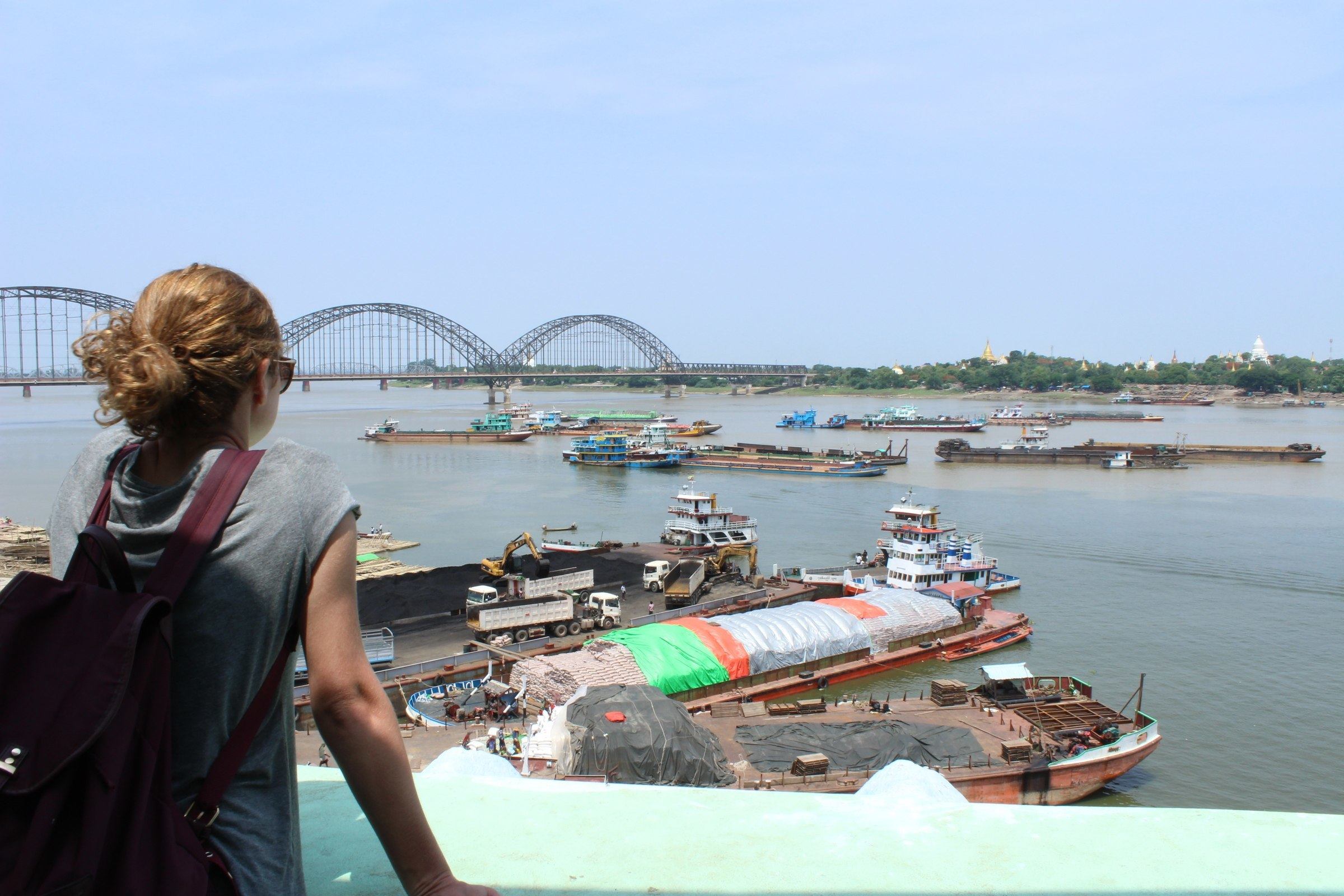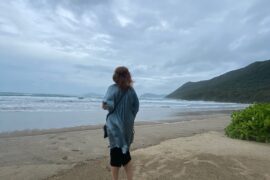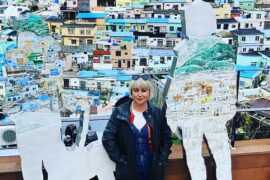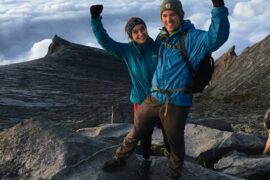Given the lukewarm traveller reviews, you’d be forgiven for wondering why anyone would bother visiting Mandalay at all. But though it may not be the rose-tinted oriental city of Western imagination (a status for which it has Rudyard Kipling to thank), don’t underestimate modern Mandalay.
Though its name may be redolent with romantic associations, modern Mandalay doesn’t always win the hearts of visitors to Burma. “It’s a rare traveller who immediately falls for Mandalay”, writes Lonely Planet – while Rough Guide describes a decidedly unenticing “grid of congested streets dominated by the walls and moat of the huge military base”. But this is a city with bags of culture, history, excitement, and even beauty – and as Kate and I discovered last May, the best way to explore it is by bike.
Here’s how we did it…
Cycling through Mandalay
8am: Back in the saddle
Our day’s cycle began in the back alleys of the north of the city, where we dodged through the crowds at the local wet market to reach the eastern edge of the Irrawaddy (Ayeyarwaddy) River.
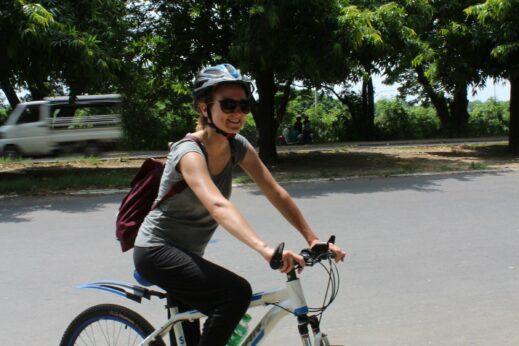
From here we glimpsed the great unfinished pagoda of Mingun on the opposite bank – a vast project started by the eccentric King Bodawpaya in 1790 but abandoned when it was prophesised that the king would die upon its completion.
Continuing along the main road to Shwe Kyet Yet Pagoda, we left our bikes behind to climb to the top for sweeping views over the river. From this vantage point, we could see both the New Ava Bridge, constructed in 2008, and the Old Ava Bridge, built by the British in 1934 – as well as a bustle of boats chugging to and fro, unloading their cargo on the docks below.
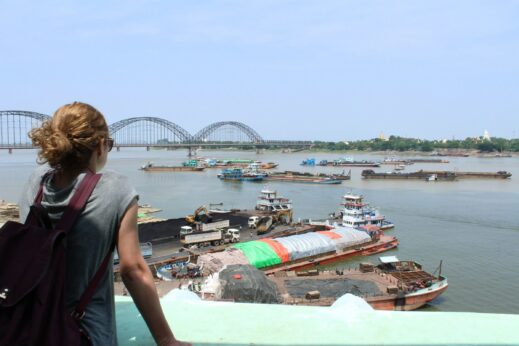
The series of leafy hills in the distance, their white spires peeping out from amongst the foliage, was our next destination: Sagaing.
9.30am: The uphill slog to Sagaing
Mandalay itself is a young city – founded in 1857 by King Mindon – but within its suburbs lie no fewer than four ancient capitals: Sagaing, Ava, Amarapura and Mingun.
Sagaing is the oldest of the four, and in fact predates modern Burma by quite some time, having served as the capital of the Shan-led Sagaing Kingdom from 1315 to 1364. After this fifty-year tenure – most of which was spent defending itself against attacks from its neighbours – the kingdom collapsed, and Sagaing lapsed into relative obscurity.
Though it’s been seven centuries since Sagaing’s heyday, the town today is still a thriving cultural hub – renowned as one of the great religious centres in Myanmar. Of its 70,000 inhabitants about 3,000 are monks and nuns, who live and worship at the 600-odd whitewashed temples that dot the landscape.
Crossing the New Ava Bridge, we found ourselves cycling along leafy avenues shaded by flame trees dripping with bright red flowers, and lined with street stalls selling rambutans and lychees.
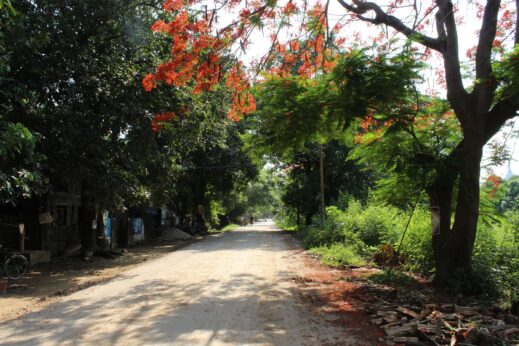
From here it was a short but punishing climb to the top of Sagaing Hill (I am not ashamed to say that I had to push my bike up the steepest section), where Soon U Ponya Shin Pagoda sits overlooking the surrounding area.
Soon U Ponya Shin Pagoda is the heart of Sagaing, and home to a vast statue of Gautama Buddha complete with flashing neon halo (as obligatory for Buddhas across Myanmar these days). But the attraction for us was not the rather disco-esque interior and gaudy gold-painted stupa, but the fabulous views over the surrounding area.
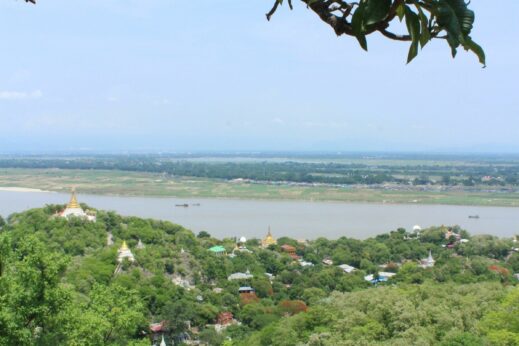
Freewheeling down the hill was our reward for a morning’s hard work, and we crossed back across the Irrawaddy via the Old Ava Bridge, stopping for lunch and some much-needed cold drinks.
1pm: Onwards to Ava
After lunch we loaded our bikes onto a small ferry and crossed the water to Ava, also known as Inwa. Thankfully our hill-climbing was now done for the day, and for the rest of the afternoon the terrain would be mercifully flat and easy.
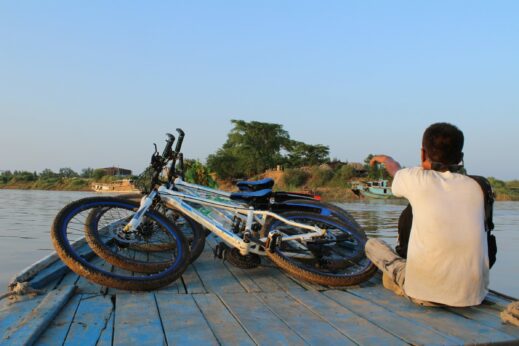
Though you wouldn’t know it from what remains today, Ava has played an even more important role in Burmese history than Sagaing. It served as the country’s royal capital on no fewer than five separate occasions – totalling nearly 360 years of power and spanning six centuries. In 1839, however, a final devastating earthquake flattened the city, prompting a move to nearby Amarapura.
Most visitors to Ava enlist the services of one of the brightly-painted horsecarts that wait by the jetty when you get off the ferry, but travelling by bicycle allowed us to tackle the area under our own steam – exploring corners of the area seemingly unknown to tourists.
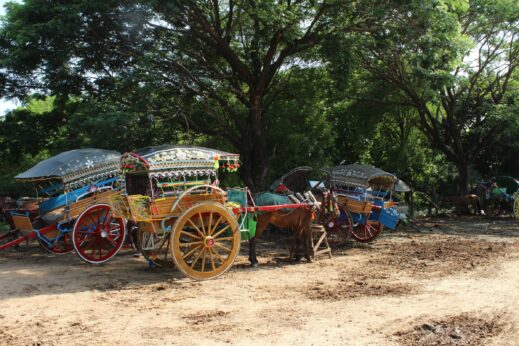
Dirt tracks led us through paddy fields and farmland, dotted with green shrubs and tall palm trees. We stopped off to admire the remnants of the city walls before calling in at Bagaya Monastery, a beautiful teakwood building with vast supporting pillars.
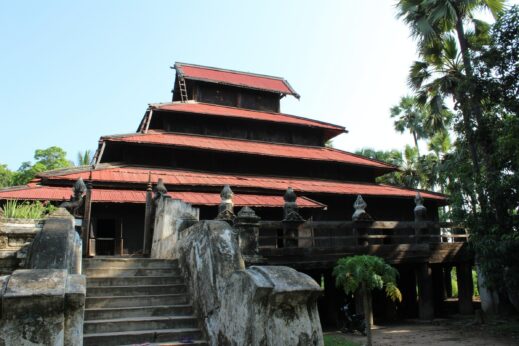
From here we continued a short distance to a group of red-brick ruins, climbing to the top of one of the pagodas for stunning views over the countryside. Though we were waylaid by a couple of polite but insistant trinket vendors along the way, we saw only one other group of tourists all afternoon, and had the beautiful landscapes largely to ourselves.
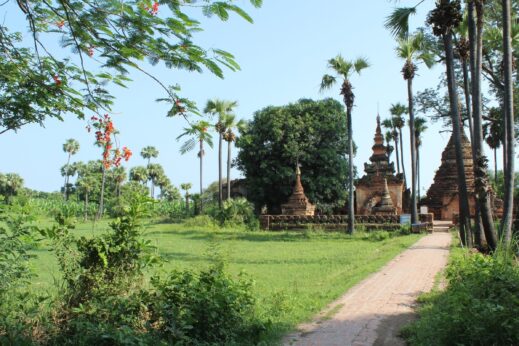
On our way back to the ferry we passed Ava’s very own “leaning tower”, the only remnant of a grand colonial-era palace which fell victim to the 1839 earthquake, before making a final stop at Maha Aung Mye Bonzan Monastery, built in 1818.
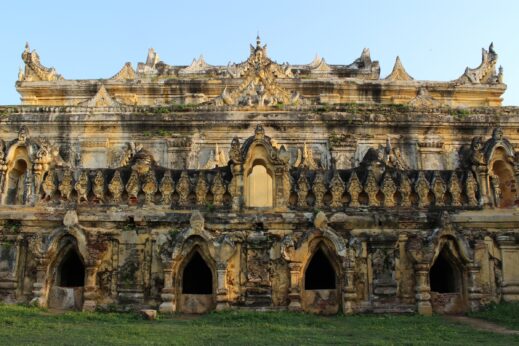
6pm: Sunset at U Bein Bridge
With the sun sinking low on the horizon, our final stop on our cycling adventure was to be U Bein Bridge – made famous by countless sunset photos, and accordingly bustling with more tourists than we saw anywhere else in Mandalay.
As we visited at the very end of the dry season the water level was at its lowest, and makeshift bars were set up on the riverbed from which to watch the sun go down.
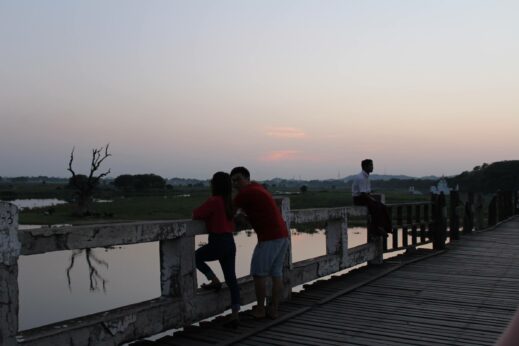
Though it was a hot and exhausting day, exploring by bicycle was the perfect way to get beneath the surface of modern Mandalay. On our one-day tour (led by the wonderful Thant Zin of Mandalay Bike Tour) we only saw a fraction of what the area has to offer – and there’s plenty more to see and do on two wheels. For a more adventurous ride, you might like to head across the river to Mingun and travel back along the west bank to Sagaing. Or, for a glimpse of rural life, perhaps explore some of the pretty and accessible back roads and markets that fan out into the countryside.
But whichever route you choose, be sure to get on your bike the next time you’re in Mandalay!
Visit Mandalay on our Beautiful Burma small group tour. We do still have some space for this year…
